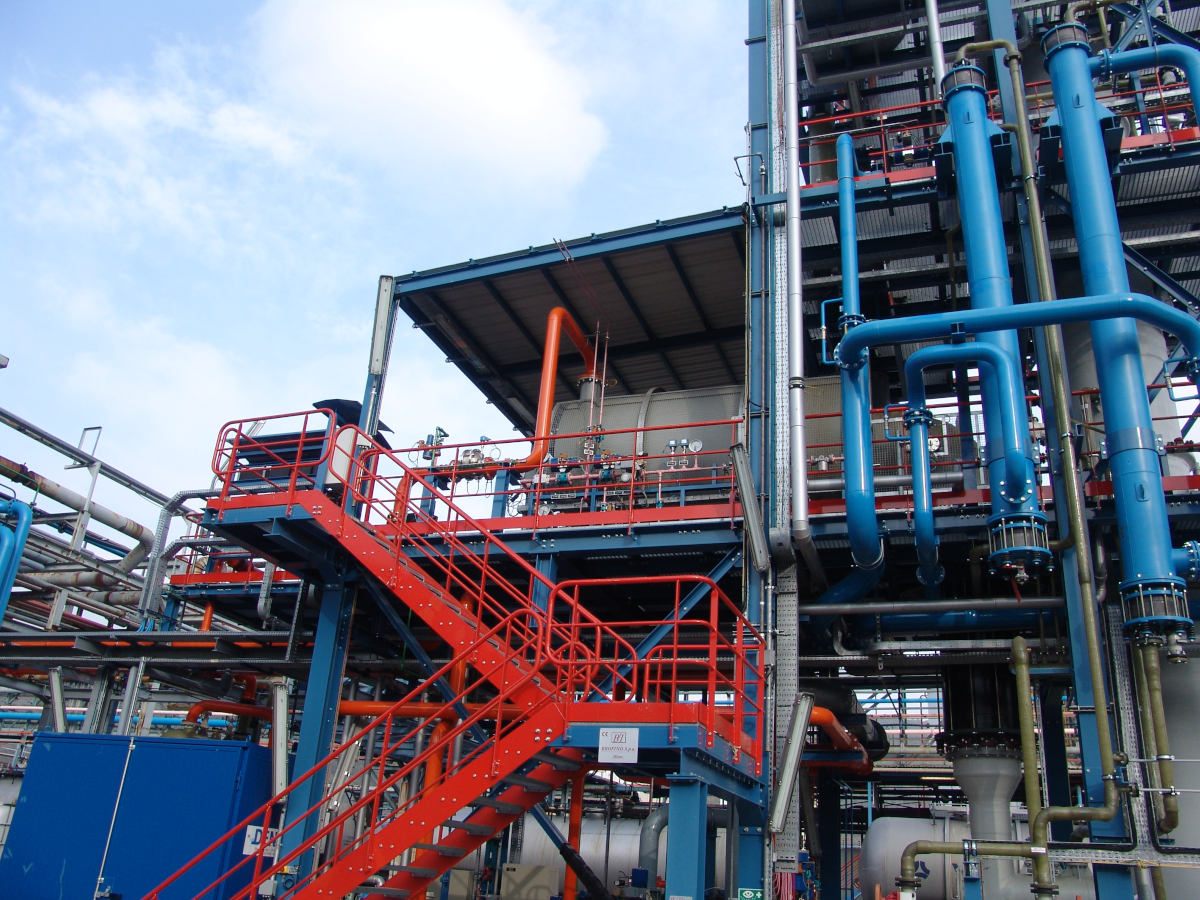SECTOR
THE ABATEMENT OF STREAMS RESULTING FROM COMPLEX POLLUTANTS IMPLIES KNOWLEDGE OF THE POLLUTANTS THEMSELVES IN ORDER TO DESIGN A SOLUTION CAPABLE OF TACKLING THEM. THESE SUBSTANCES INCLUDE ORGANIC HALOGENATED, NITROGENOUS AND CHLORINATED COMPOUNDS.

The presence of these types of pollutants complicates the treatment of atmospheric emissions, since we need to consider what follows to reach the desired depuration level:
- Specific operative parameters to obtain high depuration performances and to limit the production of polluting sub-products as much as possible;
- The need of a further treatment phase, dedicated to the abatement of possible secondary pollutants;
- The use of materials which can withstand heavy working conditions both in terms of temperature and resistance to corrosion.
A typical case is the treatment of atmospheric emissions containing halogenated organic compounds, found in the petrochemical and pharmaceutical industry.
Chlorinated and halogenated solvents – Environmental impact
The emissions coming from the production processes of dichloroethane and methyl chloride include the emissions coming from the following sections:
- Direct chlorination
- Storage
- Distillation
- Hypochlorite destruction
- Loading
These emissions, basically made of nitrogen and oxygen, are characterized by the presence of aromatic hydrocarbons (toluene, xylene) and chlorinated organic compounds (1,2 dichloroethane, methyl chloride), besides gaseous chloride and hydrochloric acid.
EMISSIONS CHARACTERISTICS
Atmospheric emissions coming from processes of dichloroethane production have the following characteristics:
| VARIABLE | CHARACTERISTICS |
|---|---|
| Temperature | Ambient |
| Presence of volatile organic compounds (V.O.C.) | Very variable, from a few dozens to hundreds of kg/h, with peaks |
| Emission flowrate | < 1500 Nm3/H |
| Operation cycle | Continuous |
| Variability | High, due to discontinuous processes (batch) which characterize this kind of production |
DEPURATION GOALS
The depuration goal is to reduce as much as possible the emission into the atmosphere of damaging pollutants (V.O.C.) and inorganic acids (HCl) generated in the oxidation process, thus avoiding the creation of organic micropollutants (dioxin, furan).
THE SOLUTION BY MEANS OF THERMAL OXIDATION AND FOLLOWING WET ABATEMENT
To solve the environmental issue, characterized by highly variable emissions both in terms of air flowrate and pollutants mass flow, we installed a thermal oxidizer along with a scrubber.
Thermal oxidation is the best technology for the treatment of low emission and variable flowrates, in case of variable organic loads, since it allows a sudden adaptation to the emission variability, thus guaranteeing constant process conditions.
Wet abatement with dosage of a base as reagent allows the neutralization of inorganic acids produced by the oxidation of halogenated organic products in the combustion process.
ACTIONS IDENTIFIED FOR THE APPLICATION IN THE PRODUCTION OF CHLORINATED SOLVENTS
THERMAL OXIDATION AND WET ABATEMENT ARE FREQUENTLY USED TOGETHER FOR THE TREATMENT OF ATMOSPHERIC EMISSIONS CONTAINING COMPLEX POLLUTANTS – e.g. HALOGENATED ORGANIC COMPOUNDS – WHOSE OXIDATION CAN GENERATE INORGANIC POLLUTANTS WHICH ARE DETRIMENTAL FOR THE ENVIRONMENT.
The application in the petrochemical industry had to identify and apply specific actions to reach the following goals:
- Obtainment of the highest depuration performances through a specific dimensioning of process parameters: >1000°C oxidation temperature, >1s residence time in the combustion chamber, >3% residual oxygen in the purified streams;
- The use of concrete refractory materials suitable to guarantee constant operating temperatures, notwithstanding the extreme variability of the emission to be treated;
- The sudden cooling of the oxidized emission, due to a quench section, to avoid the formation of organic micropollutants;
- The use of corrosion-resistant materials: graphite, Hastelloy and fiber-reinforced plastic materials for the wet abatement section.
THE ACHIEVED RESULTS
- The plant lifespan and the limitation of corrosion occurrences
- The attainment of values of pollutants concentration in the atmospheric emission that are way lower than the limits imposed by law, as indicated in the following table:
| POLLUTANT | GUARANTEED VALUE (mg/Nm3) | VALUE MEASURED AT THE TEST-RUN (mg/Nm3) |
|---|---|---|
| Hydrochloric acid | 10 | <1 |
| Vinyl chloride VCM + 1,2-dichloroethane DCE | 1 | <0,5 |
| Chlorine Cl2 | 5 | <0,3 |
| Total dusts | 40 | Non rilevate |
| Volatile organic substances (V.O.S.) | 20 | 1 |
| Methane CH4 | 50 | <1 |
| Sulphur oxide SOx | 300 | Non rilevati |
| Nitrogen oxide NOx | 100 | 66 |
| Carbon monoxide CO | 100 | <1 |
| Dioxin PCDD | 0,1 | <0,01 |
| Ethyl chloride EtCl | 20 | <0,2 |